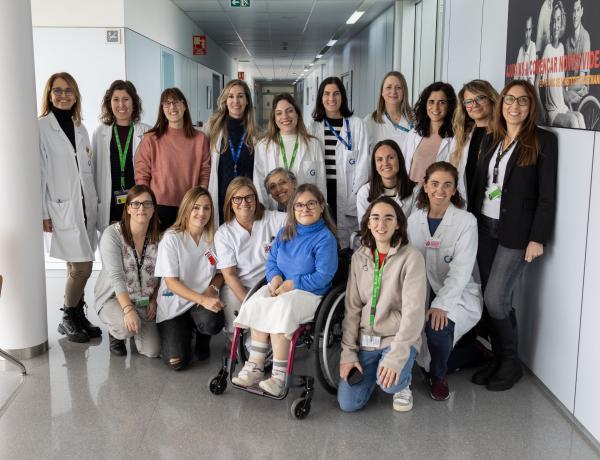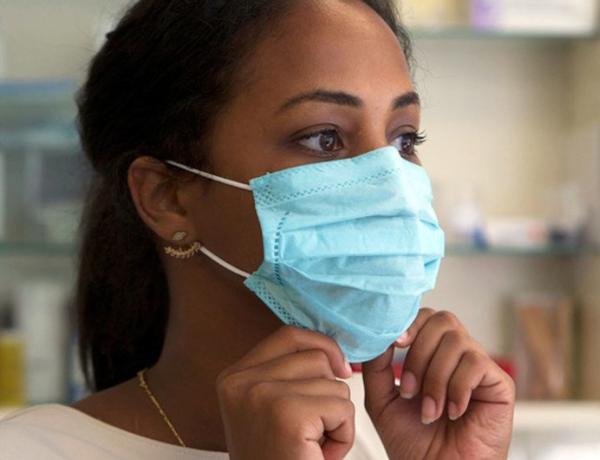Research by women for women
Research by women for women

11 February is the Day of Women and Girls in Science, established by the United Nations Assembly in recognition of the key contribution of women in science. The aim of this event is to support women's access to scientific careers and to promote vocations in girls, in part by promoting the visibility of women leaders.
Inequality in research careers inevitably goes hand in hand with a historically androcentric view of health research. “It seemed that only reproductive health was a differential trait, but symptoms, treatments or recovery for the same disease may not be the same,” wrote journalist Lara Bonilla in the special issue of Woman's body, man's medicine published in the newspaper ARA in 2021.
These biological differences explain only part of the inequalities in health, which are also conditioned by gender role. “Traditionally, research has been carried out on male models, as in any field of medicine” –explains Dr María Madariaga, an anaesthesiologist and president of the Spanish Pain Society–. However, when we move to the human gender it is a different matter, because we are not only talking about the biologically assigned sex, but at a social and functional level, the fact of belonging to the female gender changes your social position”. “Women feel more pain and drugs, especially opioids, reduce pain less and generate more adverse effects. But, in addition, if one person is the caregiver of the group, she usually takes care of the others but not herself. And if that person is usually female, it's all said and done: we are generally more likely to be in pain and to consult later,” she adds.
Preference for more 'stable' models
The field of pain is, therefore, an example of the unfinished business in research and women's health. It is known that testosterone acts as a protective hormone and decreases pain sensitivity in men, and that pharmacodynamics –the way a drug acts in the body– is different according to sex, as factors such as body mass, fat or metabolism influence it.
These and other biological factors mean that women generally suffer more pain, but this does not always translate into research applied to their specific case. “It is incredible to know that chronic pain affects women more than men and yet, traditionally, animal studies have always been done on males,” says Dolors Soler, PhD in Neuroscience at the Institut Guttmann. The reason, says Soler, is that male models have more stable biological parameters, with fewer hormonal fluctuations that can confound the results. This has short-term repercussions at the clinical level, in the way drugs are obtained and in the way patients are treated. “Women have more pain-related illnesses and suffer more intensely from pain, as they have a lower pain threshold. The potent analgesics available are less effective in our gender or sex, and culturally and socially we accept this without asking for help, so giving visibility to this gender difference is more than necessary,” says Soler.
Sexuality beyond reproduction
When we talk about medicine and women, traditionally the first –and sometimes the only– field that comes to mind is reproduction. And this is where the first wake-up call comes in: thinking about reproduction and not sexuality. “Sexuality goes far beyond the reproductive purpose. In fact, it can only be related at specific moments in a person's life, if they consider this option in their life project,” states Anna Gilabert, Doctor in Psychology at the Institut Guttmann. “In the field of spinal cord injury, when people talked about sexuality they thought of men and the research focused on men, who are the ones with the visible problem,” explains Sandra Cunyat, a nurse at the Institut Guttmann who did her Master's thesis on pregnancy and motherhood in women with spinal cord injury.
But sexuality, adds Gilabert in the article Educación afectivosexual: 7,837 million styles of living sexuality in the magazine Sobre Ruedas, “is much more than genitality and the impatient search for an orgasm”. “Scientific studies are unanimous in considering that a healthy development of sexuality has a significant impact on physical and psychological well-being, providing greater quality of life and constituting a key aspect of one's identity,” says Gilabert. Sexual health is a mental process that, as stated by the World Health Organisation, requires “the possibility of obtaining pleasure and safe sexual experiences, free of coercion, discrimination and violence”. And this includes aspects beyond reproductive function, such as sensitivity, lubrication or arousal, which are areas that the scientific community has begun to address in recent years.
In reproduction, says Cunyat, there are also many areas for improvement. In her work, the nurse found that one of the main problems encountered by the women interviewed was a fragmented health system and a lack of professionals with experience and knowledge of spinal cord injury. Professionals, for example, who knew how to detect dysreflexia, a series of symptoms produced by a painful or nociceptive stimulus usually in injuries above T6. It manifests itself in the form of sweating, headache, high blood pressure, piloerection and cold skin, and if left untreated can have serious consequences.
Dysreflexia is the reason why women with a spinal cord injury must have an epidural during childbirth, to prevent the body from reacting in this way. But this symptom cluster can also be mistaken for pre-eclampsia, a rise in blood pressure that can affect pregnant women from week 20 onwards and which, in the most severe cases, can be life-threatening for them and their unborn child. “The women affected detect when they have dysreflexia, but in the births of the women I interviewed, none of their professionals noticed it,” says Cunyat. She also adds that around 60% of births in women with spinal cord injury end in caesarean section, while in other women the figure is 27.8%. And she highlights another orphan point of research in pregnant women: urological problems (leaks, infections...). “They are the main complication during pregnancy. In most cases they mean that women have to wear a nappy, which has an impact on their daily life and self-esteem,” she explains.
Bladder catheterisation for women
Urology is another field that initially neglected women. Most people with spinal cord injury have bladder dysfunction, which in many cases requires the use of a catheter. Montse Morcillo, urodynamist nurse at the Institut Guttmann, explains that “the gold standard is intermittent bladder catheterisation, because it allows the bladder to fill and empty as it would in the bladder of a person without spinal cord injury. If the patient has a permanent open catheter, the bladder will not accumulate urine and therefore will not be functional”. She adds that the non-touch technique of intermittent catheterisation reduces the risk of infections, improving patients' quality of life.
Morcillo explains that when he joined the Institut Guttmann some 30 years ago, the catheters were designed for the male urethra, approximately 20 centimetres long. Bearing in mind that the female urethra measures between 3 and 5 centimetres, this could cause injuries when using them, especially in women with a lack of sensitivity.
Then models designed especially for women started to come out. “Commercial companies realised that if they did not adapt to women's needs, they would be left behind, and now they make smaller kits in more pleasant colours, which can go unnoticed in your handbag,” Morcillo says. In her article Compact sets, do they facilitate female intermittent bladder catheterisation”, published in 2022 in the journal Rol de Enfermería, the nurse details that the most important aspects for women when choosing a catheter are comfort, discretion, ease of use and maintaining independence. All these factors are improved with small catheters, designed for the female urethra.
All this confirms that biological and social particularities are a key element to take into account when approaching research, and that this will also improve as the presence of women in research careers increases. Days such as 11 February aim to take a few steps forward on the long road that still lies ahead.

